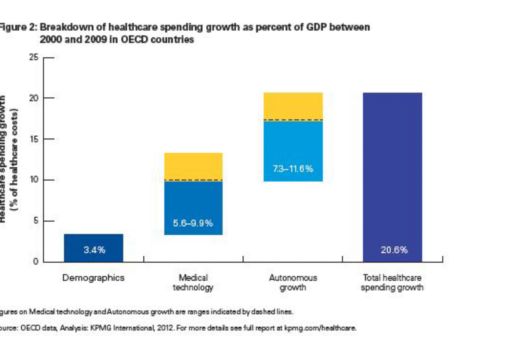Please mind the gap
Please mind the gap
There is little doubt that health systems in the developing world are approaching a widening chasm between the rapidly growing demand for health services and a steady decline in the quantity of health workers. Indeed, our analysis shows that be 2022, the OECD countries will be facing a workforce shortfall of somewhere in the region of 22 to 29 percent (see Figure 1).1,2

Is demography our destiny?
The causes of this gap are fairly clear. Demography plays a role: as shown in Figure 2, over the last decade demography explains 3.4 percent of the growth of 20.6 percent in costs in OECD countries. Larger parts of spending growth of the last decade are caused by medical technology (5.6-9.9 percent) and autonomous growth (13–18 percent) due to factors such as prosperity (which is associated with higher spending on healthcare) and supply induced demand. Over the next decade we expect an additional demand caused by demography of 6.1 percent and, assuming autonomous growth continues for the next decade, we can expect a total demand for the healthcare workforce of 13 - 18 percent (see Figure 1). In this estimation we downplayed the effects of medical technology development because these are primarily seen in healthcare expenditure. New medical technologies will however require additional healthcare professionals or professionals with new skills.

Where are all the health workers going?
Demography also plays a part in the steady decline in the number of healthcare professionals in the developed world. In part, this is because as ageing populations retire, economies experience an overall decrease in the number of people of working age. For the healthcare sector, this will result in a decline of between four to six percent over the next ten years. Yet again, there is more to the story than simple demography. Overall, employees are putting in fewer hours every year. Our research shows that part-time employment has risen from 16 percent in 2000 to 19 percent in 2009. The average number of hours worked per week has also dropped by almost seven percent over the past twenty years. If this trend is allowed to continue for another decade, we estimate that the average work week will shorten by an extra 5.6 percent to just under 34.5 hours. The combined effect of these developments is a drop in healthcare workforce capacity of between nine and 11 percent by the year 2022 (see Figure 1).
